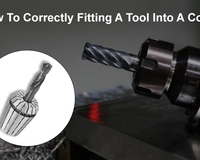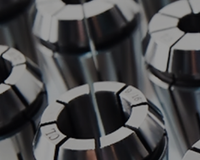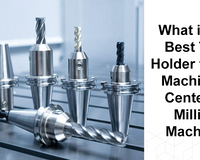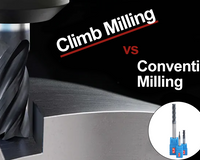An ode to accuracy and adaptability in the complex realm of machining is the BT Taper system. Mastering the intricacies of BT taper requirements is like gaining entry into a world of precision and dependability for metalworking process enthusiasts, engineers, and machinists. This comprehensive guide takes you on a tour of BT tapers, explaining everything from their design and dimensions to their uses and the most important parts of maintenance.
Vital Details About BT Tapers:
- Taper Angle:
Factors like application, spindle speed, and cutting forces determine the taper angle, a crucial parameter that represents the angle of the taper in degrees. BT tapers are usually available at conventional angles like 7/24 or 30 degrees.
2.Taper Size:
From BT30 all the way up to BT50, BT tapers are available in a variety of diameters to meet the needs of various applications and machine capacities. For maximum stiffness and efficiency, use the appropriate taper size.
3.Taper Length:
The distance from the gauge line to the end of the toolholder is known as the taper length. The gauge line is a reference point for tool length measurement. Ensuring precise taper length is essential for minimizing tool deflection and ensuring accurate tool alignment.
4.Flange Diameter:
The width of the tool holder across its broadest point is called the flange diameter. It has an impact on the stability of the tool holder within the spindle, which has an impact on machining precision.
Utilizing BT Tapers at Their Core
Deciphering the tape
The taper angle, which defines the conical part of the toolholder, is the key component of the BT taper system. To achieve the highest level of accuracy in machining processes, this angle is more than just a geometric element; it is the key to secure and exact tool positioning.
Adaptable Designs to Meet a Range of Demands
There isn't a universally compatible BT taper system. Rather, it is available in a variety of designs, with BT30, BT40, and BT50 standing for different taper sizes and features. To choose the best tool holder for a given machining job, the capacity to understand these differences is essential.
Exploring BT Taper Specifications
Understanding Taper: The Dimensions
1.BT30: Designed for smaller milling machines and other lighter machining tasks, this taper size is a common choice. Its construction takes into account the finer points of accuracy needed in these kinds of settings.
2.BT40: BT40 is a well-rounded taper size that is ideal for medium- to heavy-duty milling jobs. Its versatility makes it a go-to for many different kinds of machining jobs.
3.BT50: BT50 taper is ideal for bigger milling machines and uses that call for strong tooling, marking a transition into the world of heavy-duty machining. Even when subjected to heavy loads, its sturdy construction guarantees dependability.
Determinants are crucial
The BT30, BT40, and BT50 all have the same taper angle of 30 degrees. Ensuring the tool's accurate engagement with the spindle and sustaining the integrity of the machining process depend on this angle precision.
Establishing a Stable Flange Configuration
The flange design is an integral part of the BT taper standards. When set up in this way, the toolholder will be perfectly seated and aligned within the spindle. During machining operations, the flange is crucial for ensuring the best possible stiffness and precision.
Runtime for Conformity
The length of the toolholder is not constant throughout all BT taper diameters. It's important to think about this to make sure it will work with the machining equipment and the size of the workpiece. Accurate machining relies on using toolholders of the correct length.
Optimal Coolant Options for Efficiency
A few BT taper tool holders have the ability to pass coolant through them. During high-speed machining processes, this feature enables effective chip evacuation and cooling. The machining process is made even more efficient with the incorporation of coolant choices.
Applications of BT Tapers: When Accuracy and Efficiency Connect
Mechanism of Milling:
BT tapers are indispensable in milling processes, allowing for a smooth progression from BT30 for smaller jobs to BT50 for more demanding machining.
Operate with drills and tapping:
When it comes to drilling and tapping, BT tapers provide the same level of precision, guaranteeing precise hole locations and dependable thread formation.
Machining at Rapid Speeds:
The strength and stability provided by BT tapers make them perfect for demanding machining processes, including high-speed machining.
Care and Maintenance: Fostering Reliability
Sustaining and Assessing:
Sustaining a clean environment free of pollutants and waste is critical for maintaining accuracy. Regular checks make it easier to see damage or wear and tear early, giving you more time to fix the problem.
Proper Storage:
To avoid harming the taper and flange surfaces, it is crucial to store BT taper tool holders in specialized racks or holders. The toolholder will last longer if it is protected from the elements.
Striking a Balance:
Maintaining an even balance on BT taper tool holders is essential for reducing vibrations and maximizing tool life, particularly in applications involving high speeds. The machining setup as a whole will benefit greatly from a state of equilibrium.
Developing the Ability of Precision
Mastering BT taper specifications is like mastering an art form in the complicated dance of machining, where accuracy is key. To get the most out of machining processes, you need to know everything there is to know about BT tapers, from selecting the right taper size to making decisions about the dimensions, applications, and important maintenance tasks.
Learning about BT taper parameters can help anyone, from a seasoned machinist to an aspiring engineer or just someone fascinated by metalworking, to coordinate perfection with every tool engagement. The BT taper system, which is more than just a collection of parameters, opens up a domain where precision meets variety and where it is not just a goal but a standard. You will begin your path to precision machining mastery as you negotiate the complexities of BT taper standards.





